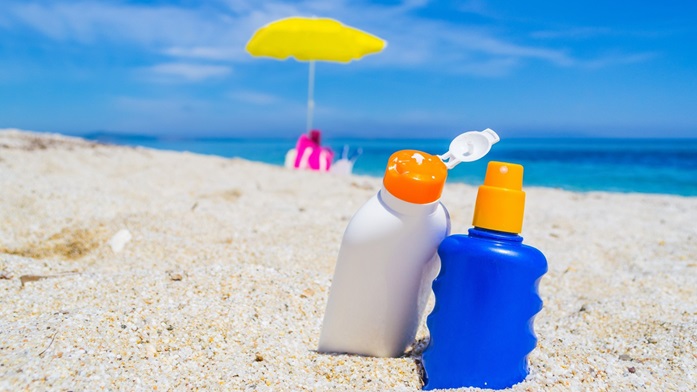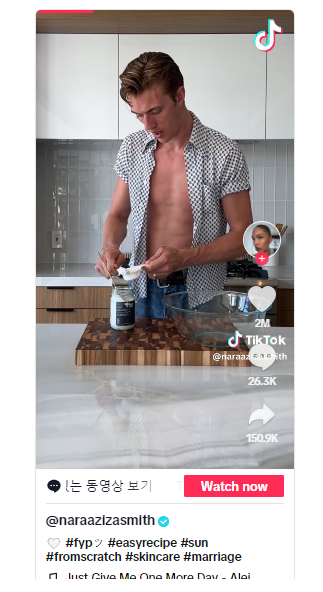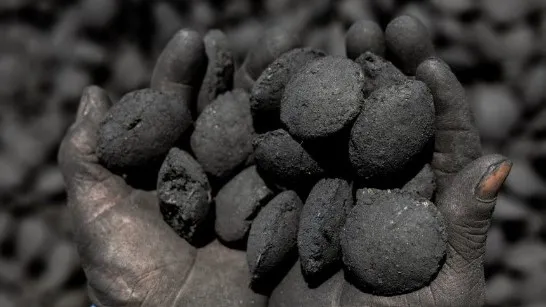 Despite their popularity, homemade sunscreens are a cause for concern. A number of beauty and wellness trends promoting natural, homemade products are sweeping social networks. As summer approaches, influencers are riding this wave to offer recipes for making your own sunscreen. However, the trend is not without potential health risks.
Despite their popularity, homemade sunscreens are a cause for concern. A number of beauty and wellness trends promoting natural, homemade products are sweeping social networks. As summer approaches, influencers are riding this wave to offer recipes for making your own sunscreen. However, the trend is not without potential health risks.
'Is it safe to make your own sunscreen?'
by ETX
Recently, a TikTok video posted by the influencer @Nara Smith went viral, showing users how to make their own sunscreen. This trend immediately caught the attention of dermatologists, who were quick to sound the alarm on social networks.
In the video, seen over 20 million times, Nara Smith's husband, Lucky Blue Smith, mixes coconut oil, shea butter, cocoa butter, beeswax and jojoba oil. After melting these ingredients in a bowl over boiling water, he adds zinc oxide powder, then lets the mixture cool in the refrigerator before applying it to the skin.
User reactions to this home-made recipe are mixed. Some TikTokers wonder about the cream's effectiveness, asking questions like "How do you know it works?" or "What is the ingredient that makes this cream a sunscreen?" Others, however, are more easily won over. The video even received positive feedback from the cosmetics brand Kiehl's, which posted "Homemade SPF? We love it!"
Yet, in the face of this new fad, dermatology experts have spoken out to warn people about the potential dangers of making your own sunscreen. Although zinc oxide does indeed act as a sunscreen, and is used in a wide variety of commercially available products, the video does not specify the quantities of any of the ingredients used. For dermatologists, it is impossible to guarantee whether the final product offers SPF 30 protection or only SPF 3, which exposes users to sunburn and an increased risk of skin cancer.
"Sunscreen formulation is very complicated, and you can't just mix zinc oxide powder into emollients, oils, and expect it to protect you properly," explains Dr. Dray, who counts 500,000 followers on TikTok. "First of all, the zinc oxide will, on a microscopic level, be clumped together. So when it goes on the skin, it's not going to provide an even layer of protection, and also you're not going to have the film-forming components in there, so you're going to have areas where there's just not any protection whatsoever [...] This is really dangerous. I don't recommend doing it."
While natural and homemade alternatives may sound appealing, formulating your own sunscreen products is not the safest way to try out the trend.
Reference
Provided by ETX
※ Picks respects the rights of all copyright holders. If you do wish to make material edits, you will need to run them by the copyright holder for approval.
more from
ETX
-

ETX
The world is preparing for the age of AI in the workplace, but not at the same pace
 2025-06-30 00:00:00
2025-06-30 00:00:00 -

ETX
Chad hopes 'green charcoal' can save vanishing forests
 2025-06-29 00:00:00
2025-06-29 00:00:00 -

ETX
Coming soon from Open AI: productivity tools to rival Office and Workspace
 2025-06-29 00:00:00
2025-06-29 00:00:00 -

ETX
How the tourism sector turned the page on the pandemic in 2024
 2025-06-29 00:00:00
2025-06-29 00:00:00
BEST STORIES
-

The Conversation
Older adults who follow healthy diets accumulate chronic diseases more slowly – new study
 2025-08-01 00:00:00
2025-08-01 00:00:00 -

KoreaJoongAngDaily
Scientists say they have solved the mystery of what killed more than 5 billion sea stars
 2025-08-04 00:00:00
2025-08-04 00:00:00 -

Street Food Guy
What's the food in Sikkim like?
 2025-08-03 00:00:00
2025-08-03 00:00:00 -

Inven Global
VALORANT Champion TenZ Joins Red Bull’s Competitive Roster
 2025-08-01 00:00:00
2025-08-01 00:00:00
Lifestyle
-

ETX
'Smart tips for summer road trips with pets onboard'
 2025-06-28 00:00:00
2025-06-28 00:00:00 -

ETX
France's Versailles unveils AI-powered talking statues
 2025-06-28 00:00:00
2025-06-28 00:00:00 -

ETX
Middle Age rents live on in German social housing legacy
 2025-06-28 00:00:00
2025-06-28 00:00:00 -

ETX
Chimpanzees share our curiosity about the lives of others
 2025-06-27 00:00:00
2025-06-27 00:00:00